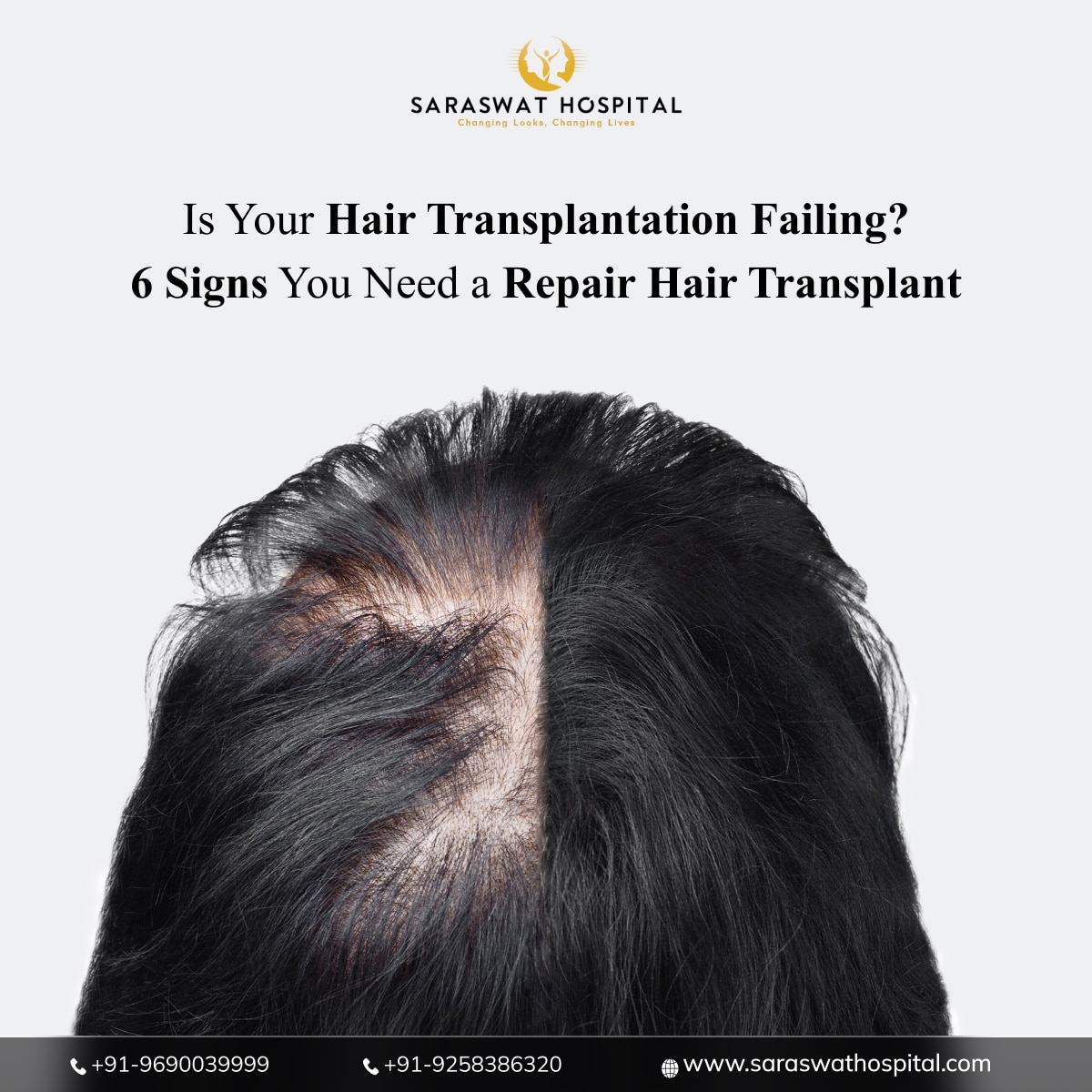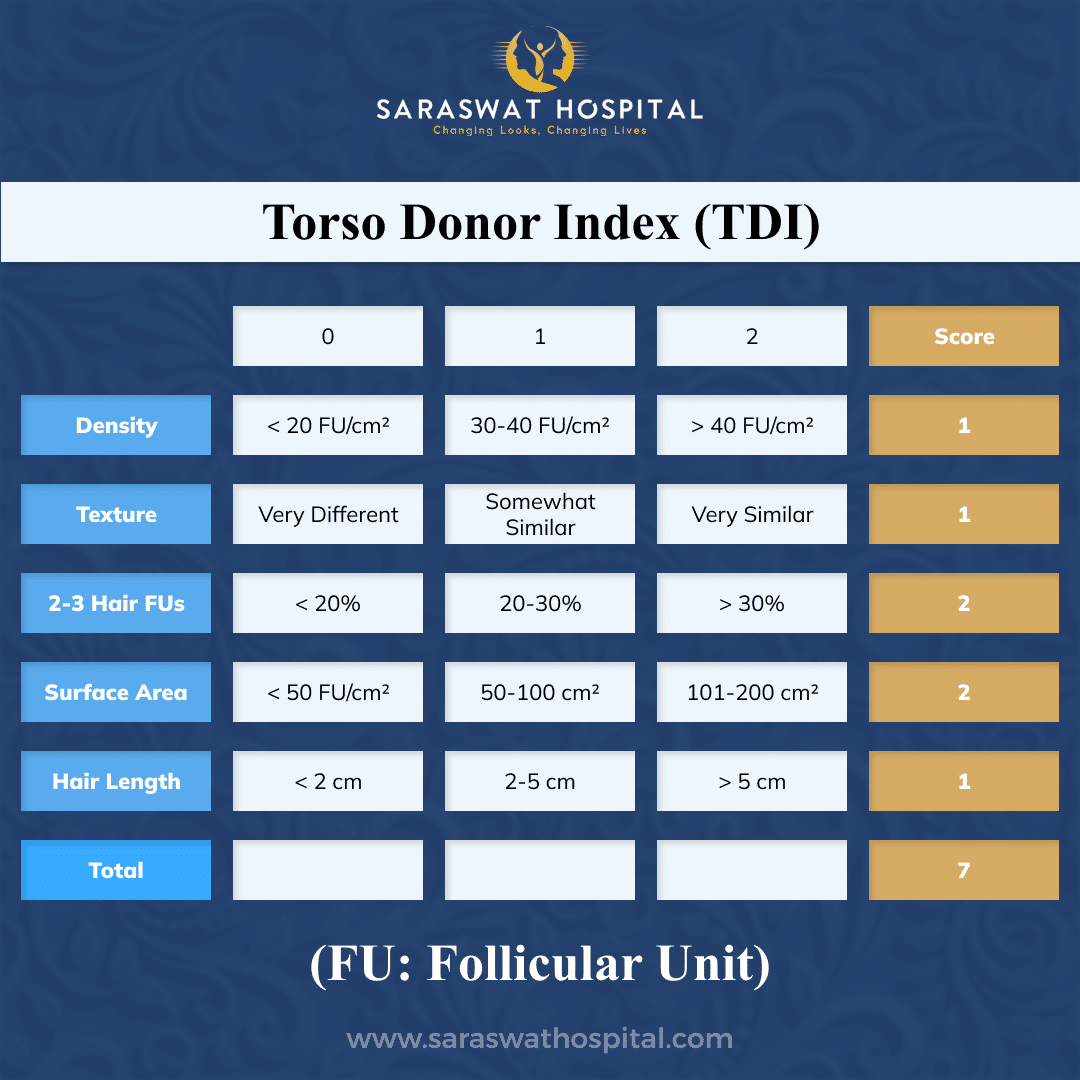Hair transplantation is a cosmetic procedure that has taken the hair restoration industry to the next level. Many people across the globe have started believing in the goodness of this procedure. However, in the last few years, the industry has experienced an unsavoury trend of unqualified individuals performing this procedure and contributing to instances of failed hair transplants. In such cases, individuals may experience poor hair growth, scarring, or other complications and improve them by a repair hair transplant in India.
A repair hair transplant is an attempt to remove botched hair transplant results by performing another surgery on the patient. Before undergoing the procedure of a repair hair transplant in India or elsewhere, you should know a few things about it. For example, you should know what the signs indicate to undergo this procedure, what steps are included in the procedure, and so on.
What Is a Repair Hair Transplant?
Just like hair transplants, repair hair transplants are also a surgical procedure that is performed for individuals who have had previous hair transplant surgery that did not yield satisfactory results. The goal of a repair hair transplant procedure is to correct issues that were not addressed during the initial procedure or to improve the overall appearance of the transplanted hair.
Most of the time, due to the wrong hair transplantation procedures, there are no healthy hair follicles or grafts left in the safe donor area. In such a situation, skilled surgeons make use of follicles collected from special areas of the body to perform the repair hair transplant treatment. Often, using a round-punch excision plug along with the FUE method, surgeons can help patients improve the unsightly results of the initial transplant. However, patients who are prone to stretch-out scars should keep in mind that the condition might recur even if they get treated under the best circumstances. Consulting the best hair transplant doctor in India can help you get a complete overview of your condition and how a repair hair transplant can improve it.
Signs You May Need a Repair Hair Transplant
When patients get botched hair transplant results, the only thing that they think of is how to fix everything and make the results look more natural.
1. Depleted Donor Area
The success of a hair transplantation surgery depends on efficient donor hair follicle usage, natural-looking results, and adequate coverage. When it comes to treating patients with baldness, the efficient use of follicles is crucial. Improper techniques or a lack of skills often lead to a depleted donor area and make the appearance of hair thinner in that area of the scalp. In order to improve the appearance of the donor area, surgeons perform repair hair transplants using new hair follicles collected from several body parts.
2. Improper Hairline
Since this is an aesthetic surgery, it should look absolutely natural. Often, improper techniques and inexperienced doctors place a frontal hairline that is too forward and gives an unsightly artificial look. Such results of hair transplantation surgery might distort the natural proportions of the patient’s face. Patients who are dealing with such results or complications should seek treatment or repair hair transplant surgery from ABHRS-certified surgeons who are able to generate the most suitable hairline. Based on the requirements, surgeons often enable micropunch excision to remove grafts and re-implant them for the best results.
3. Wrong Angular Direction
After the hair transplant surgery, the new hair growth should be at the same angle as your natural hair. However, the angle of growth depends on how the surgeons have implanted the grafts. Incorrect angulation of the follicles can separate the appearance of your transplanted hair from your natural hair, creating an artificial look. Expert surgeons generally follow downward angulation for temporal hair, and for frontal hair, they follow an anterior direction.
4. Ridging on the Hairline
Ridging on the hairline is one of the most common complications caused by improper hair transplant techniques. Often, inexperienced surgeons place larger grafts close together to achieve a denser hair appearance. It often leads to unpleasant bumps, making the entire hair look artificial. For seamless, natural-looking results, get treatment from board-certified, experienced doctors who know how to implant grafts while maintaining a proper distance between grafts.
5. Unsightly FUT Scars
Follicular unit transplantation is one of the most widely used hair transplantation techniques. If done correctly, it provides satisfactory results. However, if it is not done correctly, it may leave scars on the donor site. Experts deploy techniques like scalp micropigmentation to hide bad FUT scars and ensure natural-looking results.
6. Low Density
Inexperienced doctors often use all healthy hair follicles at once, and later the patients experience a low density of transplanted hair. In order to repair such bad hair transplant results, expert surgeons use hair follicles collected from different body parts (chest, legs, beard, etc.).
These are six signs that indicate you should go for a repair hair transplant in India by expert surgeons. Maybe you are thinking about how expert surgeons will correct the botched hair transplantation results. So, let’s take a look at the steps that experienced hair transplant surgeons like Dr. Satya Saraswat and Dr. Preeti Saraswat follow to repair unsightly hair transplant results.
7 Steps of Repair Hair Transplant
In order to achieve a satisfactory result, it is crucial to follow the steps accordingly. Each step is essential, and expert surgeons take the best care of each step.
Step 1: Trichoscopy & Biopsy
Trichoscopy is the computerised analysis of scalp and body hair. It helps to get a fair idea of the success rate of a hair transplantation procedure. When used for the repair of hair transplants, trichoscopy helps in several ways. For example, it helps to know the thickness and density of donor hair, the percentage of available single/double/triple hair, how they will create the final look, or how much coverage a patient can achieve via hair transplantation.
A biopsy helps to identify the underlying reasons that cause balding or prevent natural hair growth, especially for patients who are suffering from fibrosing alopecia or alopecia areata.
Step 2: Recipient Calculation
In this step, hair transplant doctors calculate how many grafts or roots are required to be transplanted to achieve satisfactory results. For fair calculation, they divide the entire scalp into three sections: frontal, mid-scalp, and crown. Then they measure the total bald area and decide on an approximate number of grafts. The same calculation method is also applicable for body areas where hair transplantation is required.
Step 3: Torso Donor Index for Body Hair
Due to bad hair transplants, often the donor area of the scalp becomes depleted, and the doctors need to collect donor hair from other parts of the body for a repair hair transplant.
Expert hair transplant surgeons often follow a special technique to determine whether a patient is eligible to undergo a body-to-scalp hair transplant or not. This special technique is known as the Torso Donor Index. It helps to know facts like hair density, the similarity between the body and head hair, the available number of follicular units with 2-3 hair follicles, the size of the donor area, and the length of the body hair. If a patient scores less than 4 in the Torso Donor Index, he/she is unsuitable for a body hair transplant. Patients with a TDI score of 8 or more are suitable for body hair transplants.
Step 4: Procedure Planning & Customised Approach
Generally, the best hair transplant clinics in India or elsewhere follow customised treatment approaches for each patient. The requirements and goals of each patient are unique. Enabling a personalised approach helps bring satisfactory results for each patient.
Doctors review factors like age, medical history, etc., of an individual patient and then decide the best repair hair transplant technique. They often follow combination procedures to ensure the success of a repair hair transplant, such as scalp FUE + FUT, scalp FUE + beard FUT, scalp FUE + beard FUT, or scalp + body FUE.
Step 5: Execution of the Procedure
In a repair hair transplant case, the donor area of the scalp is already compromised. And that’s why expert hair transplant surgeons do everything possible to maintain the best quality of the grafts during a repair hair transplant. They use the best quality punches with minimum transaction rates with low torque, low RPM machines equipped with a counter, and Choi implanters to avoid graft mishandling and ensure the best results for the patient. If required, surgeons also perform procedures like direct hair transplantation, bio FUE or FUT, etc.
Step 6: Post-Hair Transplant Care
To ensure satisfactory repair hair transplant results, post-procedure care is also important. In the first week, the patient should avoid any kind of damage to the grafts. Doctors suggest keeping the grafts moist with saline water and avoiding touching the treatment area. Patients must inform the doctor if any inconvenience occurs.
In order to enhance the results of a repair hair transplantation, doctors often suggest treatments like PRP, low-level laser therapy, mesotherapy, and so on. Consult with your doctor to determine the best treatment for the growth of your transplanted hair.
Step 7: Nutrition & Lifestyle
For healthy hair growth, protein is a vital factor. Patients must have a protein-rich diet and take multivitamins designed for better hair growth. Leading a stress-free life is also important for healthy hair growth and preventing hair loss issues.
Get 7 Tips to Keep Your New Hair Healthy After a Transplant
In order to better understand how expert surgeons perform repair hair transplants in India, watch this video. Here, Dr. Preeti Saraswat (ABHRS-diplomat & a member of ISHRS) will tell you in detail how repair hair transplants are being done to ensure satisfactory results.
Conclusion
Hair transplantation is a life-changing decision for those experiencing hair loss or thinning hair. Sometimes, improper methods and inexperienced doctors may not bring the best results for a patient. Be it a first-time hair transplant or a repair hair transplant in India or elsewhere, try to get it done by a highly qualified doctor with years of experience. Saraswat Hospital is a leading hair transplant clinic in India, where patients can get treatment from Dr. Satya Saraswat and Dr. Preeti Saraswat. They are ABHRS diplomates (the American Board of Hair Restoration Surgeons (ABHRS) and members of ISHRS (the International Society of Hair Restoration Surgeons). They have more than nineteen years of experience and have performed more than 13,000 cosmetic surgeries. With their profound knowledge and expertise in this field and the help of state-of-the-art technologies, they ensure satisfactory results for their patients. So, if you want to get rid of a botched hair transplant, contact Saraswat Hospital today.









Leave a Reply